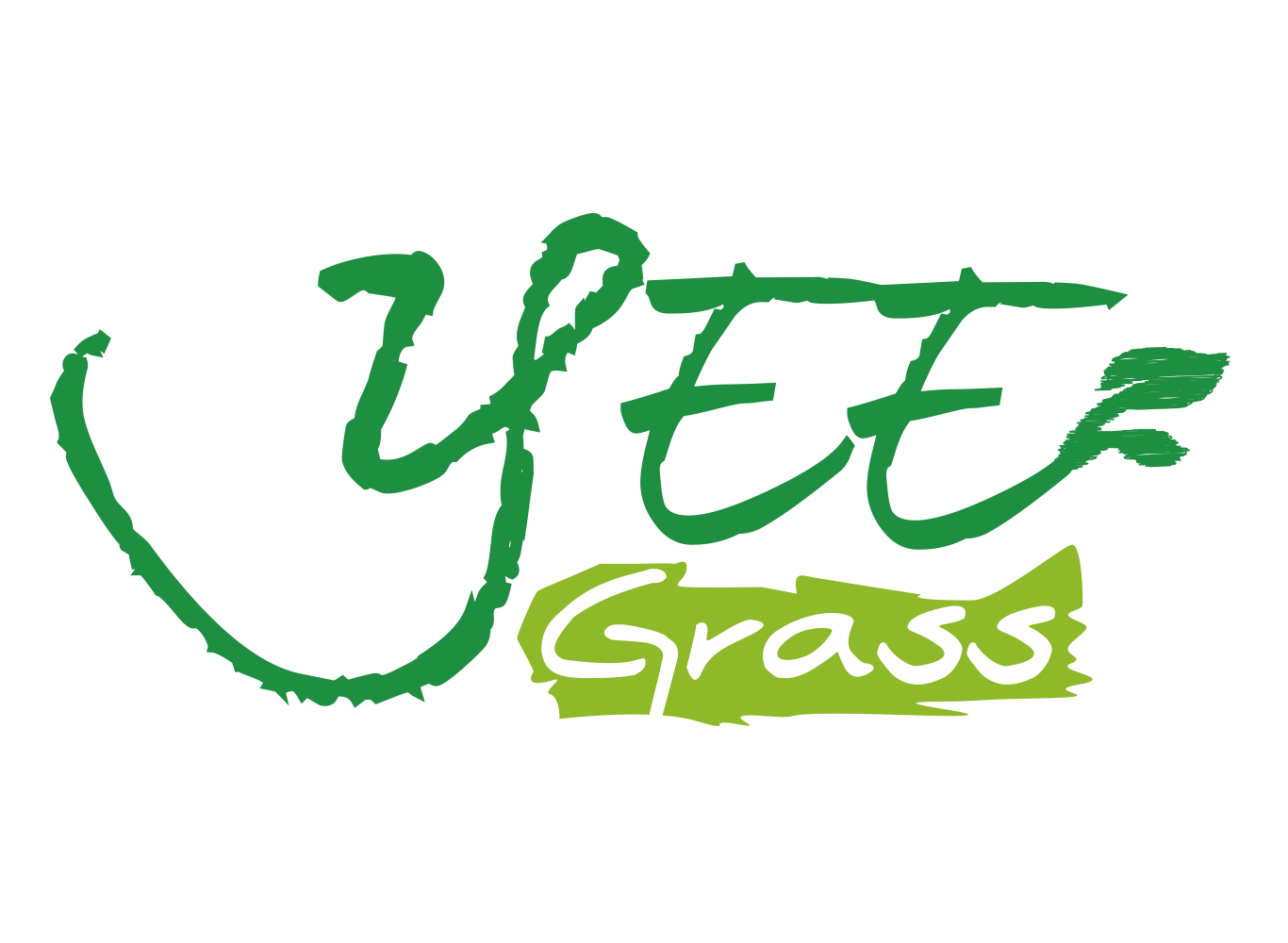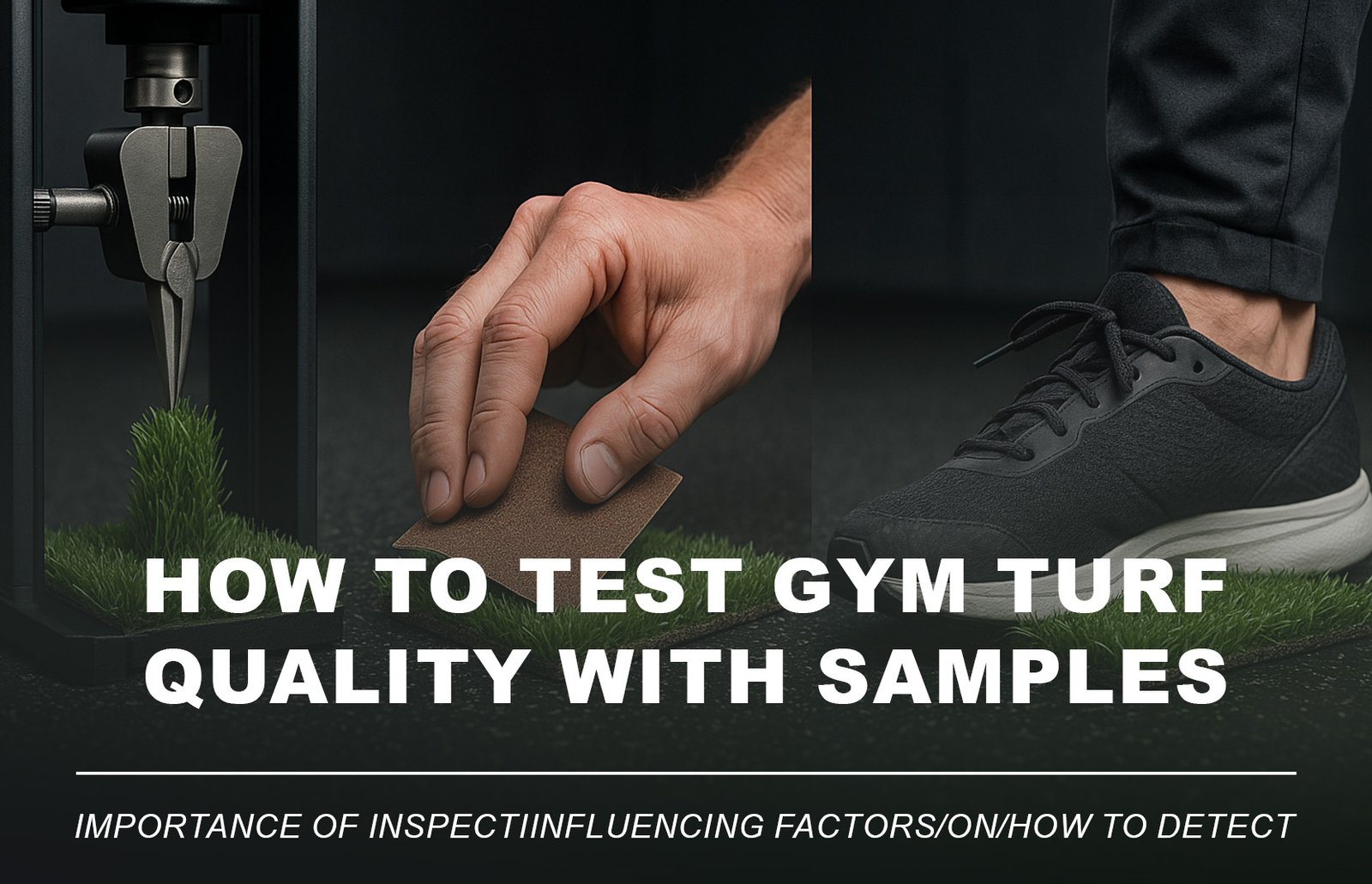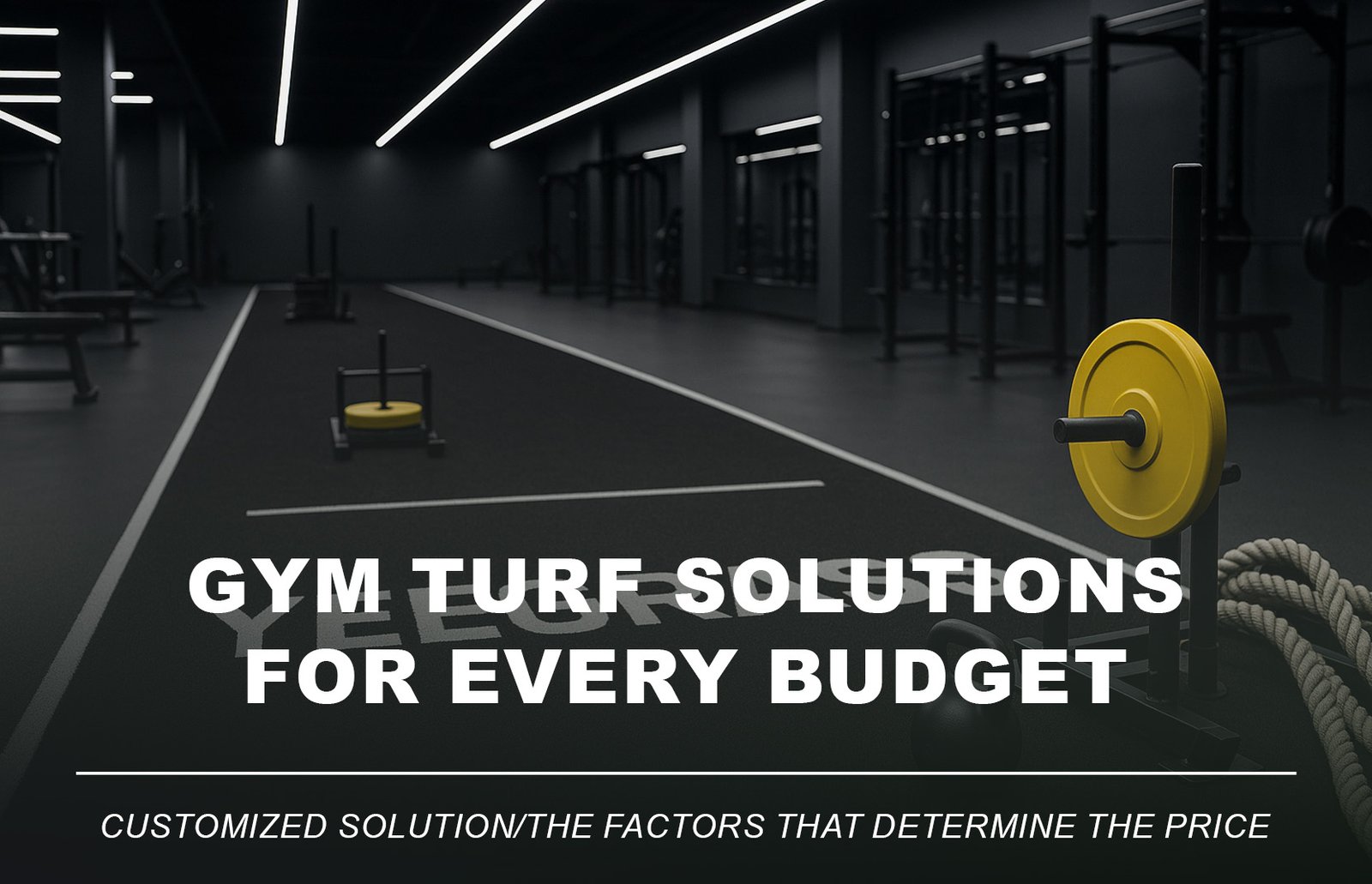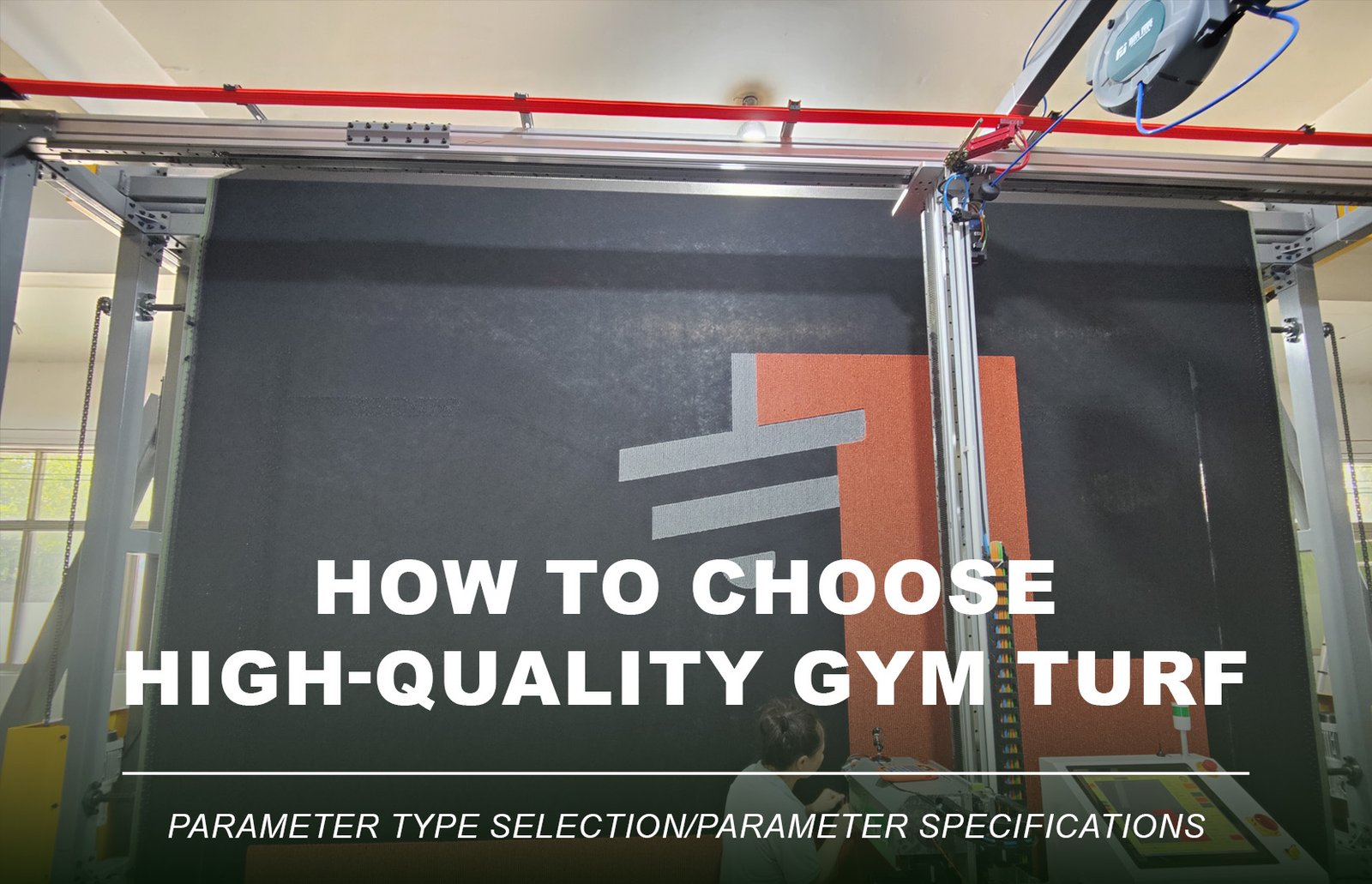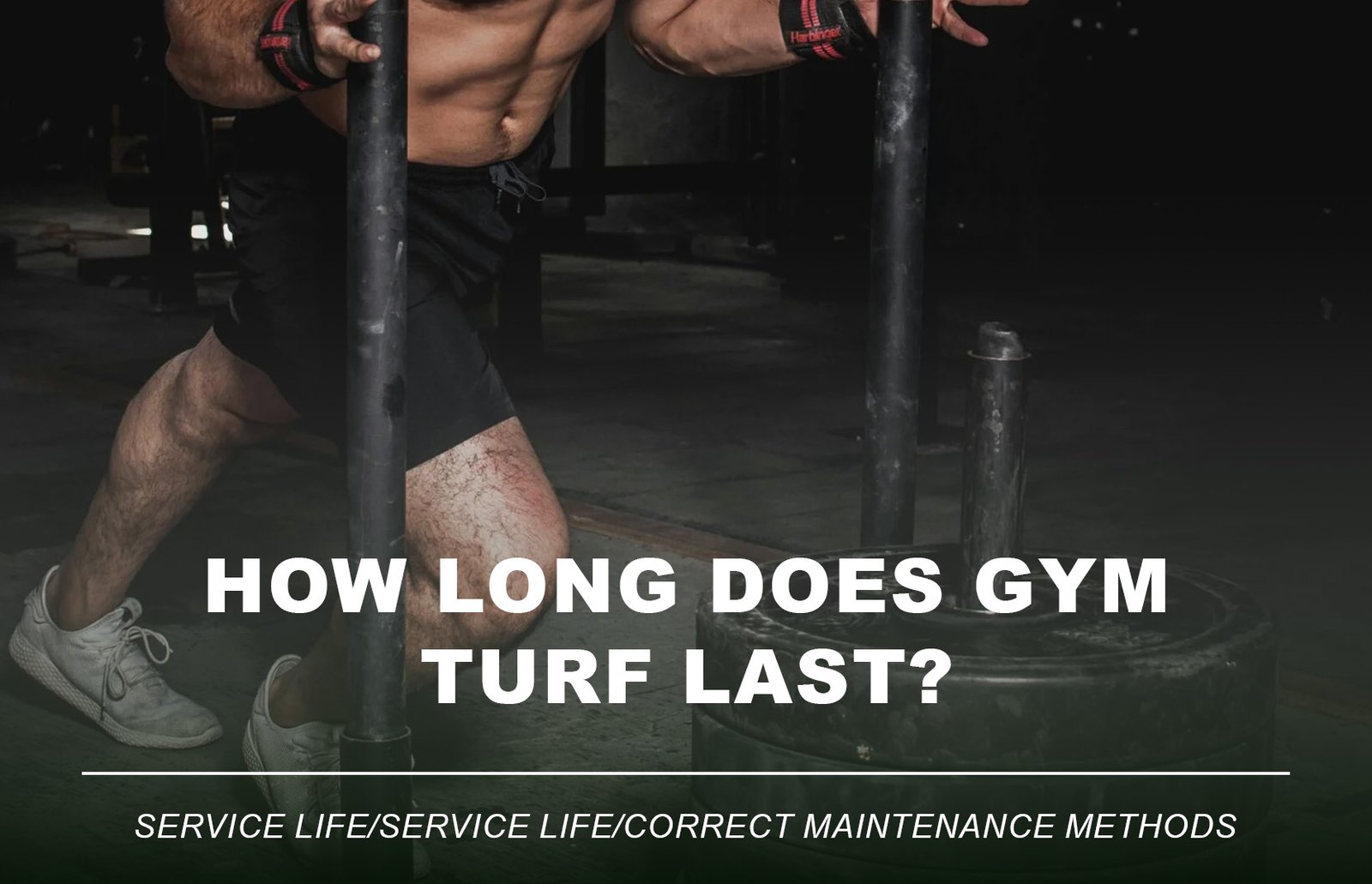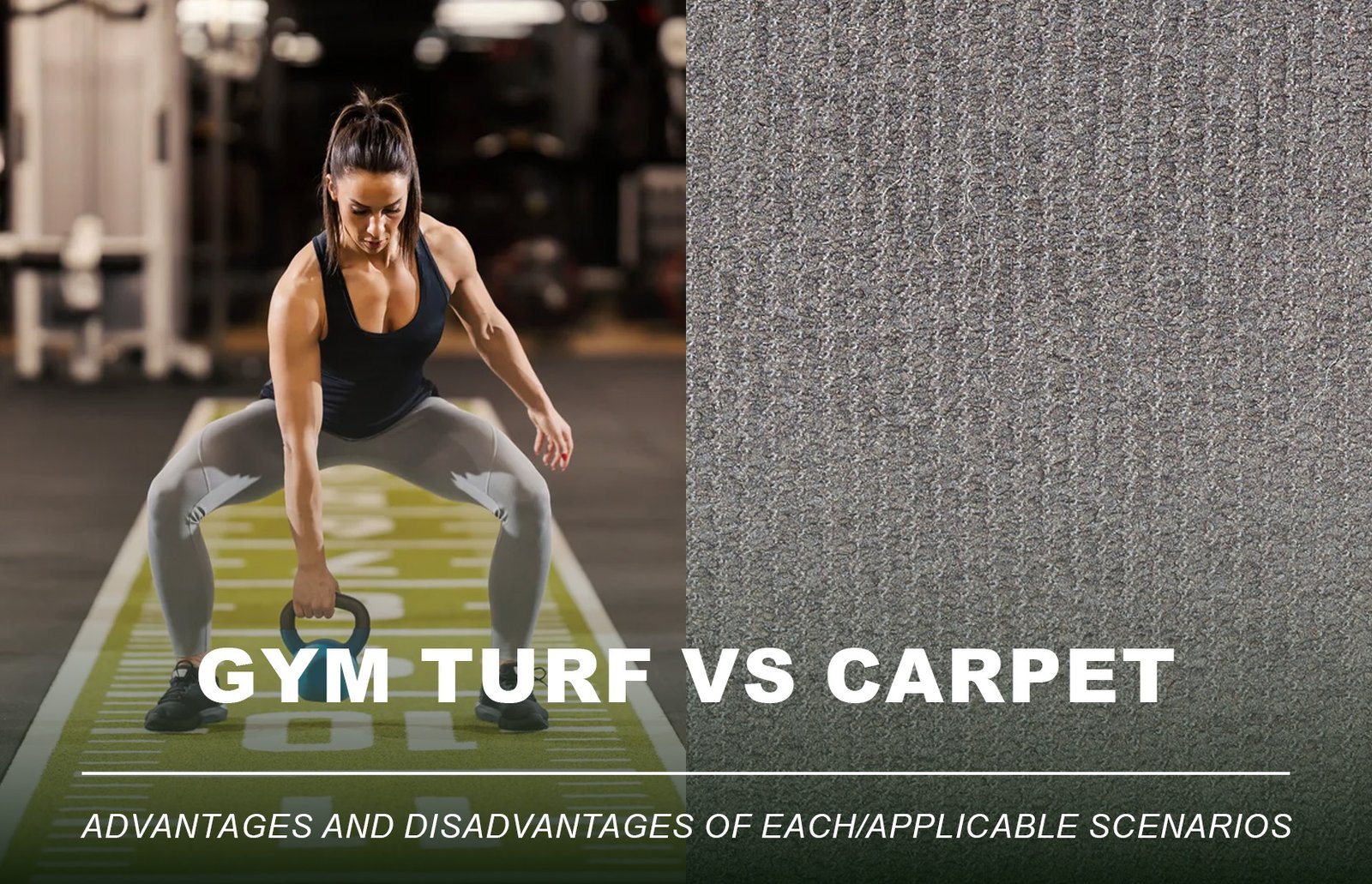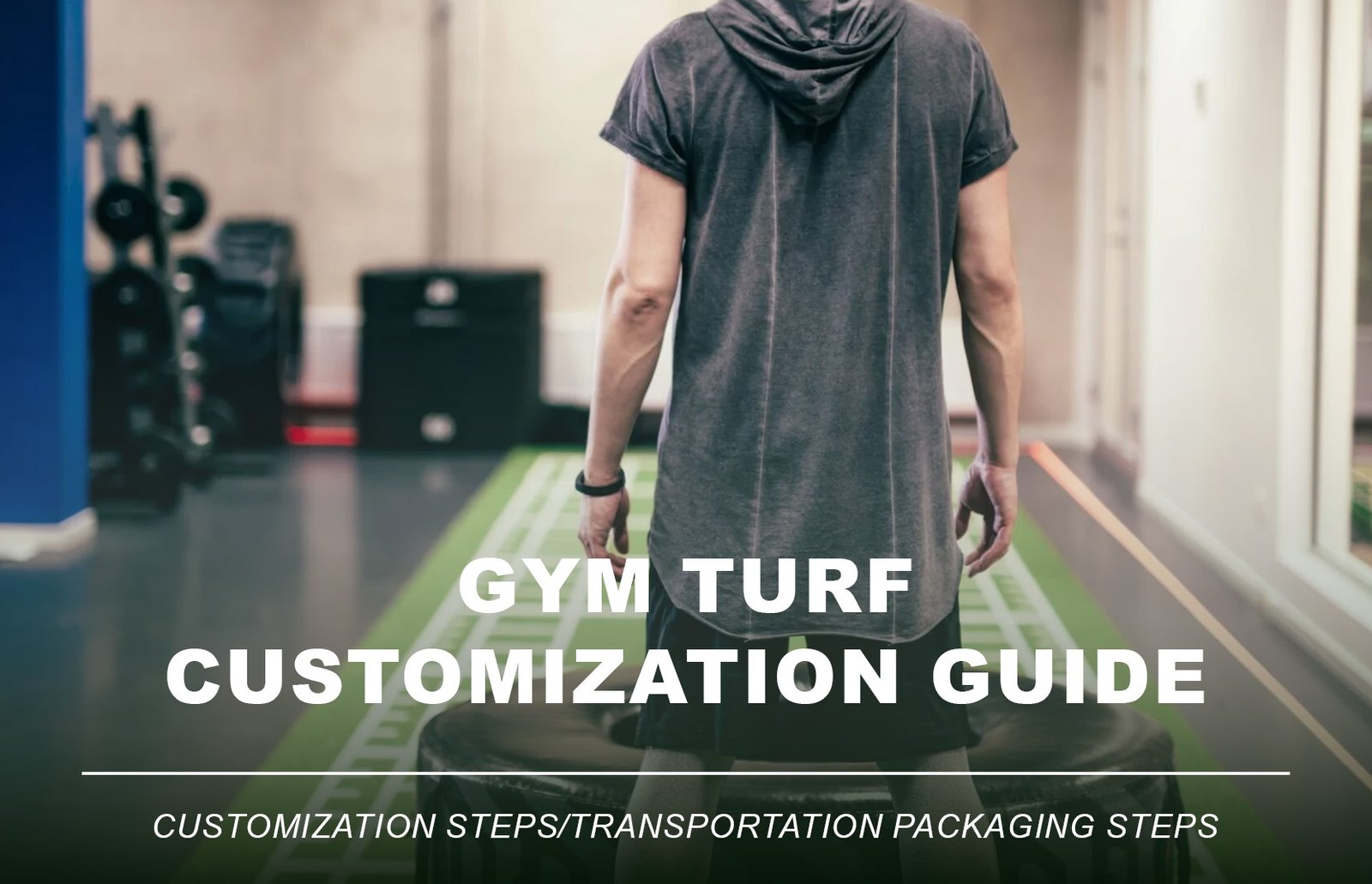
1.Introduction
When investing in gym turf for a professional training space—whether for HYROX, CrossFit, HIIT, or sled workouts—quality matters. The last thing you want is turf that flattens, frays, or loses traction within months.
That’s why testing gym turf samples before making a bulk purchase is essential. With just a few simple yet effective tests—tensile strength, resilience, and abrasion resistance—you can assess the performance and durability of your turf and avoid costly mistakes.
In this guide, we’ll walk you through how to check gym turf quality step-by-step, so you can make an informed buying decision.
2.Why Gym Turf Quality Testing Matters
High-quality gym turf isn’t just about appearance—it’s about longevity, safety, and performance. Poor-quality turf can lead to:
- Early fiber wear and flattening in high-traffic zones
- Reduced grip, increasing slip risks
- Fiber breakage during sled pushes or agility drills
- Hygiene issues due to moisture absorption and bacterial growth




3.Step 1 – Tensile Strength Test
(1)What It Is
Tensile strength measures the force required to pull a turf fiber until it breaks. Higher tensile strength = stronger fibers that won’t shed or snap during high-intensity workouts.

(2)How to Perform
- Manual Check: Hold a single fiber with pliers and pull firmly to see if it resists breaking.
- Lab Standard: Use a tensile testing machine (ASTM or EN methods) for precise measurement.
(3)What Results Mean
- Recommended: 30–50N or higher for commercial gym use
- Lower tensile values may be fine for decorative areas but won’t survive sled pushes or heavy traffic.
4.Step 2 – Resilience Test
(1)What It Is
Resilience, or rebound, measures how well turf fibers return to their upright position after being compressed. High resilience means your turf will maintain its look and feel for longer.

(2)How to Perform
- Foot Press Method: Step on the turf sample for one minute, then release and time how long it takes for fibers to recover.
- Instrument Method: Use a rebound tester for more accurate readings.
(3)What Results Mean
- High-density PE fibers usually have better resilience than low-cost PP fibers.
- Turf with faster rebound rates is better for high-frequency training zones.
5.Step 3 – Abrasion Resistance Test
(1)What It Is
Abrasion resistance shows how well turf fibers withstand repeated friction from equipment and movement.

(2)How to Perform
- Manual Test: Rub the surface with coarse sandpaper for 20–30 cycles to mimic sled pushes or dragging weights.
- Lab Standard: Taber Abrasion test measures fiber wear and color change after a set number of cycles.
(3)What Results Mean
- High abrasion resistance is critical for sled lanes, agility tracks, and weight zones.
- Turf that frays or loses color quickly will require replacement sooner.
6.How to Use Test Results in Your Purchase Decision
- Compare Suppliers – Ask each supplier for sample test data and independent lab reports.
- Match to Training Needs – High-sled-use gyms should prioritize abrasion resistance; agility-focused gyms may value resilience more.
- Verify Certifications – Ensure test methods follow recognized standards (ASTM, EN).
- Don’t Skip the Physical Sample Test – Specs on paper can’t replace a hands-on evaluation.
7.Conclusion
Testing gym turf samples is a smart and cost-effective way to ensure you’re investing in durable, safe, and high-performance flooring for your facility.
By checking tensile strength, resilience, and abrasion resistance—plus optional slip and fire safety—you’ll know exactly what you’re getting before installation.
📞 Want a free gym turf sample for testing?
We provide:
- Pre-cut samples for tensile, rebound & abrasion tests
- Full technical data sheets & certifications
- Expert recommendations tailored to your training type
